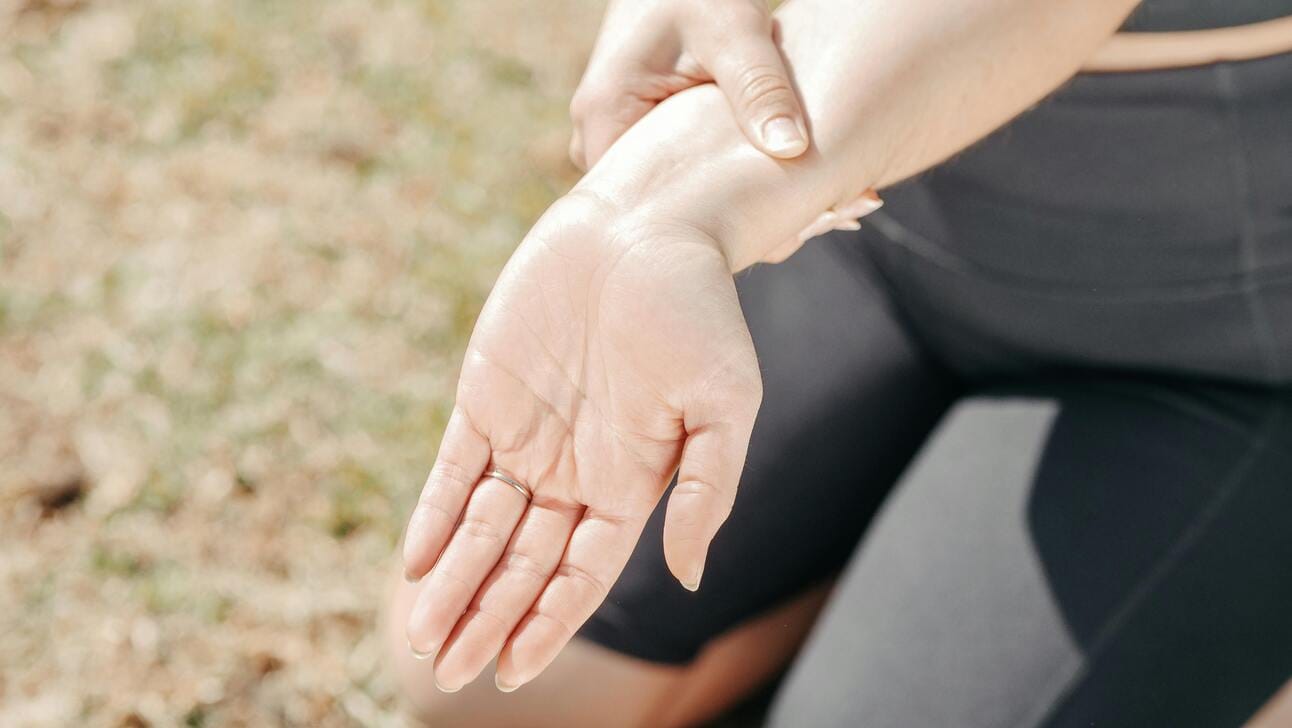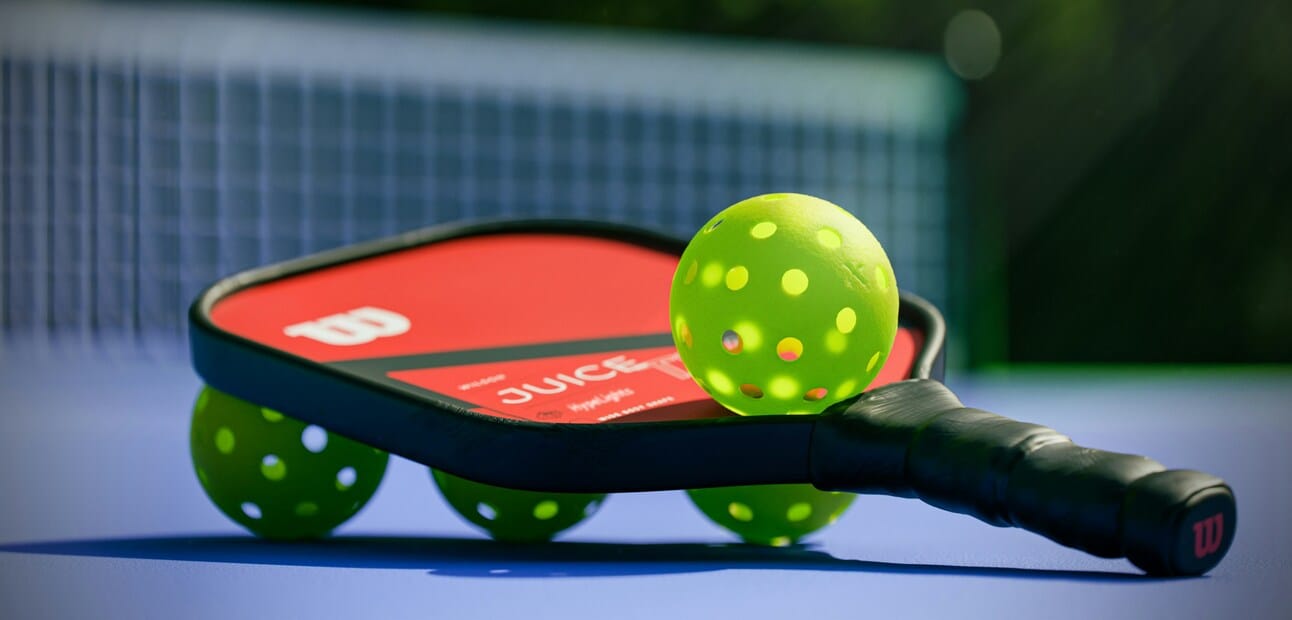This week, we're getting into something most rec players ignore until it starts to hurt.
Your paddle isn't just a piece of gear. It's a lever. The way it's built affects how your arm works. Weight distribution, balance point, handle length... these specs can either help protect your wrist and elbow or quietly wear them down, session after session.
In this issue:
We'll break down how paddle specs like swingweight and balance affect joint load and arm fatigue
Then we'll explore the differences between paddle shapes and how to choose what fits your body and playing style
Whether you're shopping for your next upgrade or wondering why your wrist aches after rec play, this issue's for you.

Paddle Specs & Arm Pain: What Rec Players Need to Understand
If your wrist or elbow aches after a few games, especially on your dominant side, your paddle might be part of the problem.
It's not always overuse or poor form. Sometimes, it's the invisible physics of your gear: how much force your paddle transfers to your joints every time you swing.
Your Paddle is a Lever (Whether You Know It or Not)
Every paddle acts like a lever arm. The longer and heavier the lever, the more torque your joints absorb when you accelerate, decelerate, or absorb impact from the ball.
There are three major specs to pay attention to:
1. Swingweight (Not Just Total Weight)
What it is: Swingweight measures how heavy the paddle feels during motion, based on weight distribution, not just the total grams on a scale.
Why it matters: A 7.9 oz paddle with weight at the tip can stress your wrist way more than an 8.4 oz paddle with a balanced core. Higher swingweight equals more torque, especially during fast flicks and off-center contact. This is a major contributor to:
Tennis elbow (lateral epicondylitis)
Wrist strain
Grip fatigue and shoulder compensation
2. Balance Point (Head-Heavy vs. Handle-Heavy)
The gist: Where the weight is centered: toward the head, the handle, or evenly spread.
Why it matters: A head-heavy paddle increases power but also amplifies the force your forearm must control. That can overload the small wrist stabilizers and elbow extensors. Handle-heavy paddles offer better maneuverability and control but may reduce topspin potential for some players.
3. Handle Length and Grip Circumference
Quick breakdown: Longer handles give you more leverage for two-handed shots. Thicker grips provide more surface area for large hands to reduce squeeze force.
Why it matters: If your grip is too small, you'll over-grip the paddle, increasing tension in your wrist and forearm flexors. Too large, and you'll reduce dexterity and reaction speed. Either way, it adds up over time.
If your paddle isn't matched to your body, your joints take the hit.
Signs Your Paddle Might Be Hurting You
Achy elbow or wrist the day after rec play
Pain increases with volleying or flick shots
You feel like you're over-squeezing just to control your shots
You've had to change paddles or wrap the grip to "mask" discomfort
These are load-management issues in disguise. The paddle isn't the only factor, but it's one of the easiest to modify.
How to Choose a Joint-Friendly Paddle
1. Prioritize control over max power. Heavy, head-loaded paddles might feel great on slams but can crush your soft tissue over time. A more balanced, lower swingweight model often keeps you on the court longer.
2. Test before you commit. Demo days are gold. Feel how different balance points affect your contact and comfort. Don't chase someone else's power setup if it doesn't fit your build.
3. Pay attention to post-play signals. If your wrist is sore but your technique felt solid, that's a flag. Try a lighter or more balanced setup and see if symptoms fade.
Pickleball is supposed to be accessible. You shouldn't need a wrist brace and elbow sleeve just to play two games.
Want to play longer and feel better after? Start with the paddle that supports your swing, not one that sabotages it.

Paddle Shapes Explained: Which One Fits Your Game (and Body)
Not all paddles are created equal, and the shape you choose can make a bigger difference than you think.
Some players pick based on feel. Others just go with what looks cool. But your paddle's shape affects more than just aesthetics. It changes how your arm moves, how your shots feel, and how long you can play without discomfort.
Let's break down the three most common shapes and how to pick the one that actually fits you.
1. Standard (Widebody / Traditional)
Size: Around 16" x 8" Sweet spot: Centered and forgiving Best for: All-court play, newer players, anyone dealing with joint pain or returning from injury
Why it works: Standard paddles offer the most stability and forgiveness. The wider face creates a larger hitting zone, which helps minimize strain from off-center shots. This shape is often easier on the wrist, elbow, and shoulder, especially if your mechanics aren't perfect every time.
Downside: You'll trade a bit of reach and spin potential compared to elongated models.
2. Elongated (Blade Style)
Size: Around 16.5–17" x 7.5" Sweet spot: Higher on the face Best for: Aggressive players, former tennis athletes, and those focused on spin and reach
Why it works: Elongated paddles offer more leverage. That extra length helps on overheads, passing shots, and attacking from the baseline. You'll also get more spin potential, assuming you've got the mechanics to match.
What to watch: They're more top-heavy, which increases strain on your wrist and elbow. If your shoulder isn't strong enough to control the extra torque, this shape can backfire. Definitely not ideal for anyone recovering from injury or with known mobility limitations.
3. Hybrid (Control/Power Blend)
Size: Slightly longer than standard but not quite elongated Sweet spot: Just above center Best for: Versatile players, doubles specialists, anyone upgrading from entry-level gear
Why it works: Hybrids strike a balance. They give you a bit of reach and spin potential without sacrificing too much control or comfort. Most mid-level and premium paddles now use this shape because it works well for a wide range of players, and it's generally more joint-friendly than the longer designs.
Bonus: If you're not sure which direction to go, hybrids are often the safest bet.
How to Choose the Right Shape for You
1. Start with your body, not just your style. If you're under 5'8" or have a history of wrist or shoulder pain, lean toward a standard or hybrid shape. If you're taller, stronger, or tennis-trained and pain-free, you may be able to handle the demands of an elongated paddle.
2. Match your shape to how you play. If you're quick at the net and live for dinks and blocks, go for standard or hybrid. If you're built around drives, overheads, and spin-heavy shots, elongated might give you an edge.
3. Pay attention to post-game feedback. If your arm feels off after playing, don't ignore it. Discomfort isn't just part of getting used to new gear. It's your body telling you something's not working. Switch back or try a shape that distributes force more evenly.
The right paddle shape won't fix your technique. But it will help your joints stay healthier while you figure it out.
Choose the shape that helps your body last, not just the one that feels good in your hand for five minutes.
That's a wrap for this week.
If your wrist or elbow has been bothering you lately, don't just ice and hope. Small changes in paddle shape or balance can make a big difference in how your joints handle the load. And if you're in the market for a new paddle, now you know what to look for and what to avoid.
If you found this helpful, pass it on to a fellow player who's always taping up their wrist or tweaking their setup. It might help them last a few more games too.
See you next week.
Boris.
Disclaimer: This newsletter is for educational and informational purposes only and does not constitute medical advice. The content is not intended to be a substitute for professional medical advice, diagnosis, or treatment. Always seek the advice of your physician or other qualified health provider with any questions you may have regarding a medical condition. Never disregard professional medical advice or delay seeking it because of something you have read in this newsletter.
